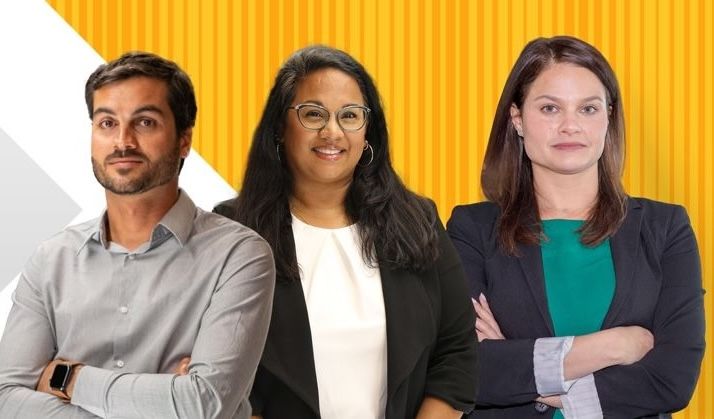Standardizing gender and sexuality data in USAID surveys
Our survey research team is advancing USAID’s goal of inclusive LGBTQI+ representation to promote equitable health programs and policies in low- and middle-income countries
How can participants feel represented in a survey if their gender or sexual identity is excluded from the questionnaire from the start?
This was a significant challenge faced by our nearly 70-person U.S. Agency for International Development (USAID) funded Demographic and Health Surveys Program (DHS Program) team when looking to standardize methods for collecting more representative health data across in-country surveys.
Though the program has collected diverse gender and sexuality data through some surveys for years at the request of the host country or local government agencies, there hasn’t been standardized, uniform guidance on how to collect these data. Until now.
ICF has implemented the DHS Program since its inception over 40 years ago. The program, considered the gold standard of survey research, is the world's premier source of critical and actionable data for population, health, and nutrition programs. It’s also the leading source of information on gender in countries.
Survey data are used by national governments, international organizations, researchers, and others to support strategic planning, policymaking, financing, program management, and more.
To date, the DHS Program has collected, analyzed, and disseminated accurate and representative data through over 450 surveys in over 90 countries.
Advancing inclusive development through quality data
In 2023, USAID released their first-ever LGBTQI+ inclusive development policy. That along with global policies such as the United Nations’ Sustainable Development Goals, which set ambitious targets aimed at leaving no one behind, marked significant milestones toward creating a more inclusive and equitable world.
“Everyone, everywhere, has a sexual orientation, a gender identity, gender expression, and sex characteristics.”

With a high bar set, our team is supporting USAID’s efforts to raise awareness on sexual orientation, gender identity, gender expression, and sex characteristics (or collectively SOGIESC) through quality data collection in populations. We started with collaborative discussions among team members that translated into a DHS Program-hosted webinar: Inclusive Survey Design: Collecting Data on Gender and Sexual Minorities. Then culminated in a March 2024 study, Collecting Diverse Data on Gender and Sexuality in Demographic and Health Survey: An Overview.
ICF survey researchers Blake Zachary and Kerry MacQuarrie co-authored the study, along with former ICFer Sarah Balian. The study examines key considerations for collecting diverse gender and sexuality data in DHS surveys to better understand individuals’ SOGIESC characteristics. Blake and Kerry lead our efforts to advance inclusive survey research and regularly participate in industry-wide gender and sexuality-related working and technical groups whose goal is to advance SOGIESC issues.

Blake has 15 years of experience in public health and social sciences and has supported work on USAID surveys on general reproductive health and family planning, as well as U.S. domestic surveys relating to HIV surveillance and transgender population health. He says, “The accuracy of the data we collect is important in how we represent the population. We don’t want to inadvertently erase participants’ true identity because they aren’t represented in the survey form.”
For example, most surveys give only two options for gender: “man” or “woman.” If someone identifies as neither, their survey responses aren’t counted in the data. Meaning they aren’t represented at all. This type of scenario also can create an awkward situation with field surveyors, who conduct in-person interviews door to door. Asking the gender question with limited response options can result in alienating a participant from the outset.
"As a member of the queer community, this work really resonates with me. Accurate representation is important. And I appreciate how ICF and USAID are advancing efforts to embrace diversity and inclusiveness on a global scale."

A social demographer, Kerry brings 20+ years of experience researching gender issues in developing countries on topics such as adolescent reproductive health and transitions to adulthood, intimate partner violence, marriage, men's engagement, contraception, HIV stigma, and more. She’s supported the DHS Program for 12 of those years, both with ICF and for one of our partner organizations. She shares, “There’s a lot of value in bringing populations and population groups visibility where they haven't had it before. There’s also a lot of interest from the global community in better understanding health inequities and resolving and minimizing those inequalities. To have this inequality reduction lens requires that we have data that various government and civil society actors can act upon.”
“Since the study was published, we’ve definitely seen an uptick in interest and inquiries about the possibility of including gender diversity data in a broader number of country surveys.”
Sarah is a senior communications adviser for the Johns Hopkins Center for Communication Programs, one of several partner organizations supporting the DHS Program, and has supported the DHS Program in various roles for 14+ years. She specializes in translating research into products that inform programs and policies. She adds, “There's a lot of focus on reaching the most marginalized groups, and LGBTQI+ individuals and communities are one of those groups. If we're not supporting these groups as a whole, we won't achieve our goal of creating a more inclusive and equitable world.”
